This is a wanton era, an era of logo fever, and an era when money must be dazzled. Every era has its own characteristics and social and historical roots, so it is impossible to refute it or to target it aimlessly.
In the field of classic dress shoes, people also see the distinctive and outstanding patina at a glance. Looking forward to the gorgeous aesthetic popularity of the French court, even in the last shape, the aggressive ones are more recognized, such as Berluti and Gaziano & Girling. It’s not that they are better than others, they just conform to the trend.
The classic dress shoes I agree with (I am very conservative) are restrained coquettish. It means that only people who understand it will smile when they see it. At other times, in the eyes of everyone, it is an antique.
I think this is also the state that most things are understood deeper.
The details of dress shoes, which are unexpected and reasonable, are what I admire most.
The detail we see today is a place that everyone almost acquiesces and hardly pays attention to, but its innovation and aesthetic creation are for people who are in the know.
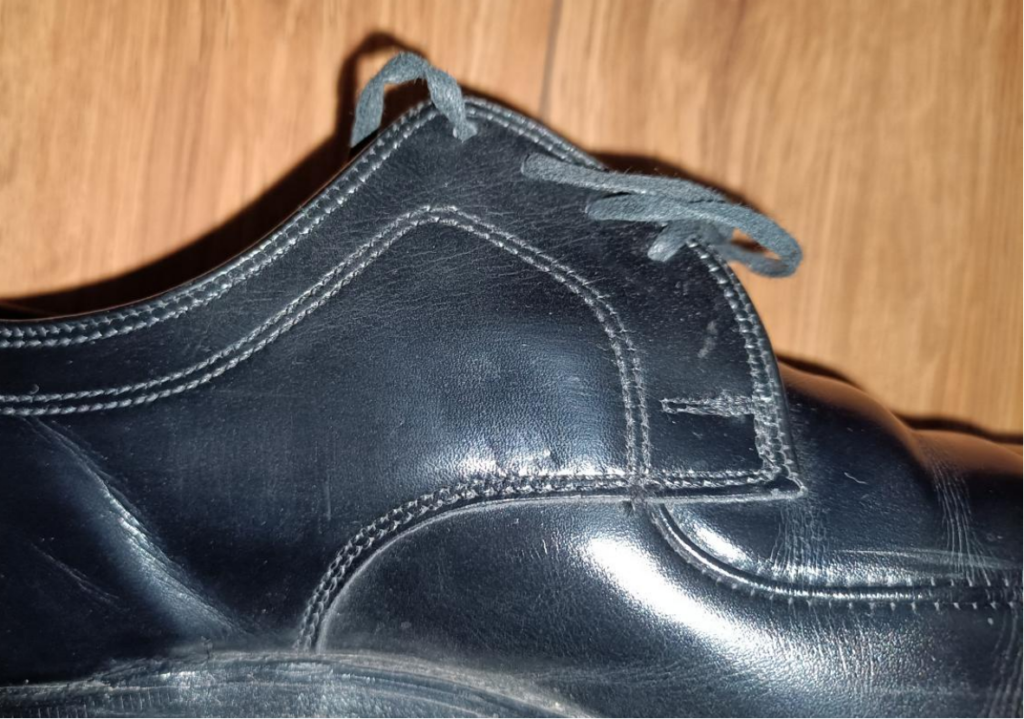
Below eyelets, whether Oxford or Derby, can have decorative lines. This is a pair of Hanover derby, the double stitches are parallel to the outer edge of leather. This can be said to be the most common or orthodox design.
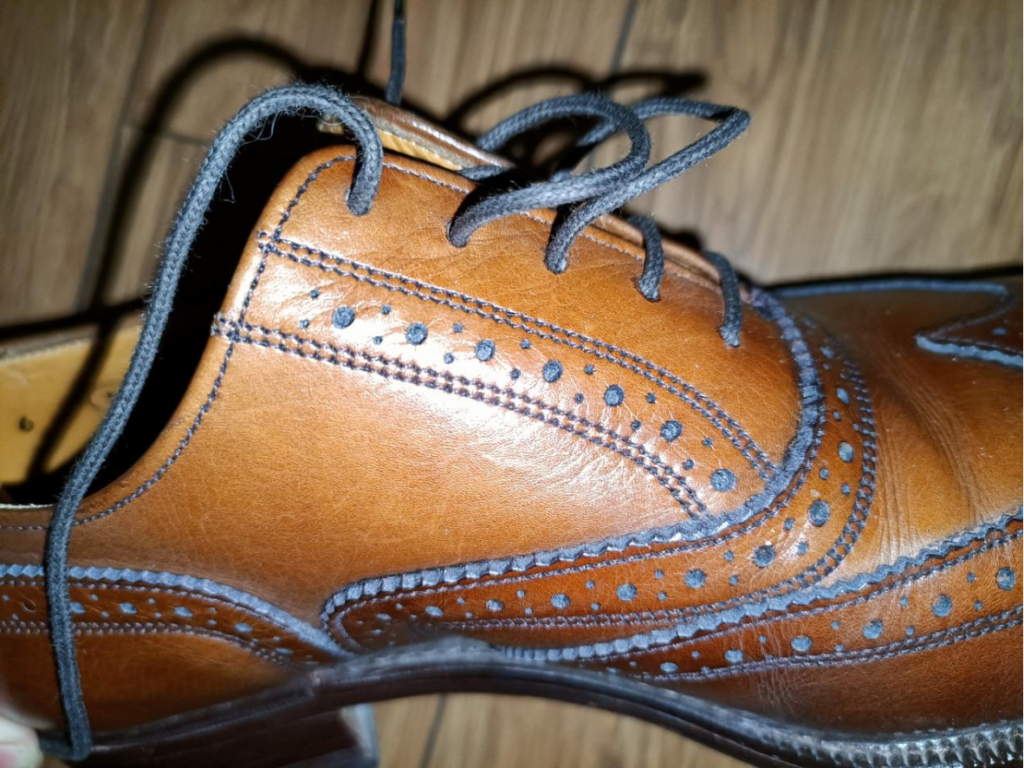
This pair of British K Shoes is a pair of full brogue Oxford, so this area is brogued. For Oxford, there is no trend of leather outer edge, so what is the default way? Basically, it is to stay at the corner of the “throat” area.
In my eyes, although the decorative Brogue of this pair has the same width and holes size as other Brogued area, the decorative line is thicker and not good-looking because it is shorter.
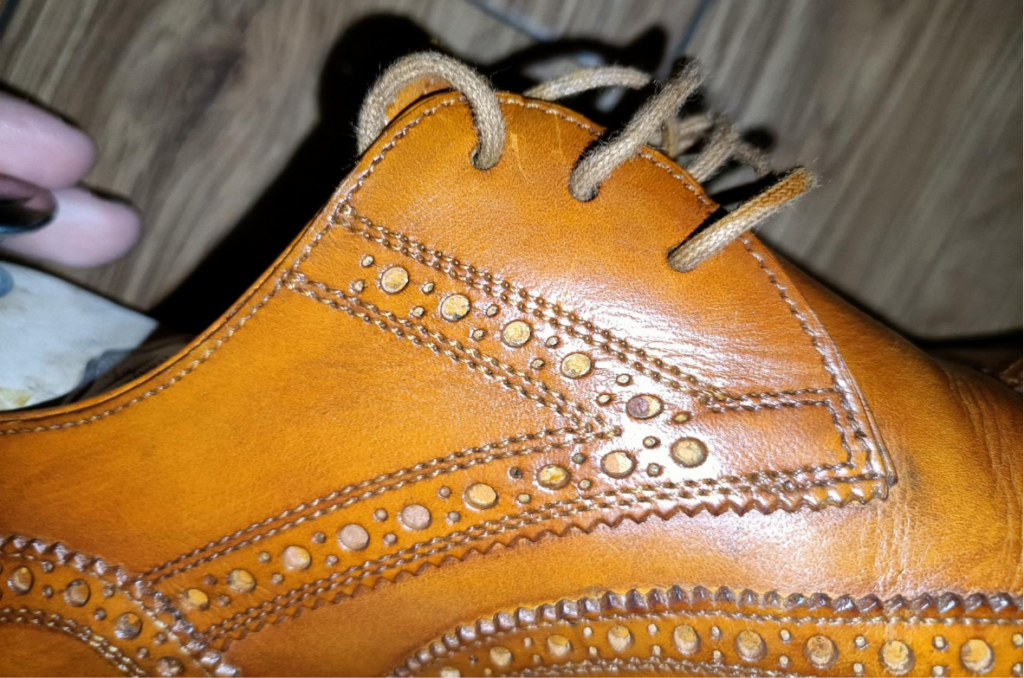
This pair is a Budapester from Rozsnyai, a Hungarian shoemaker. This area is completely different. It is very original and unruly, but it is also very beautiful.
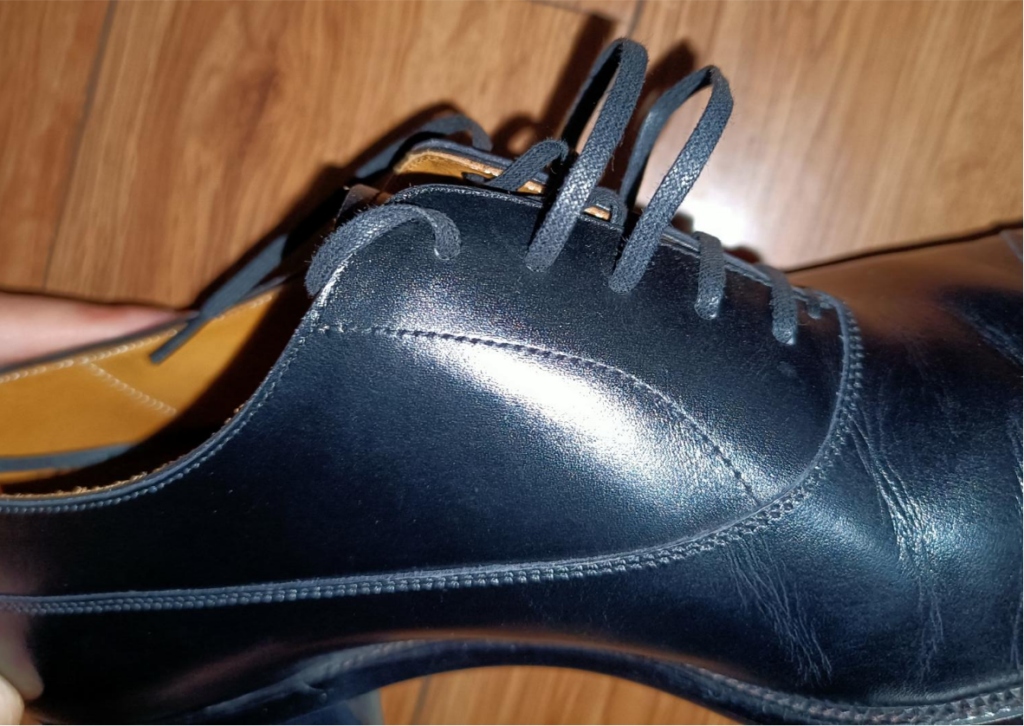
Badia’s Balmoral Oxford, this stitch is what I admire most. Slender and restrained.
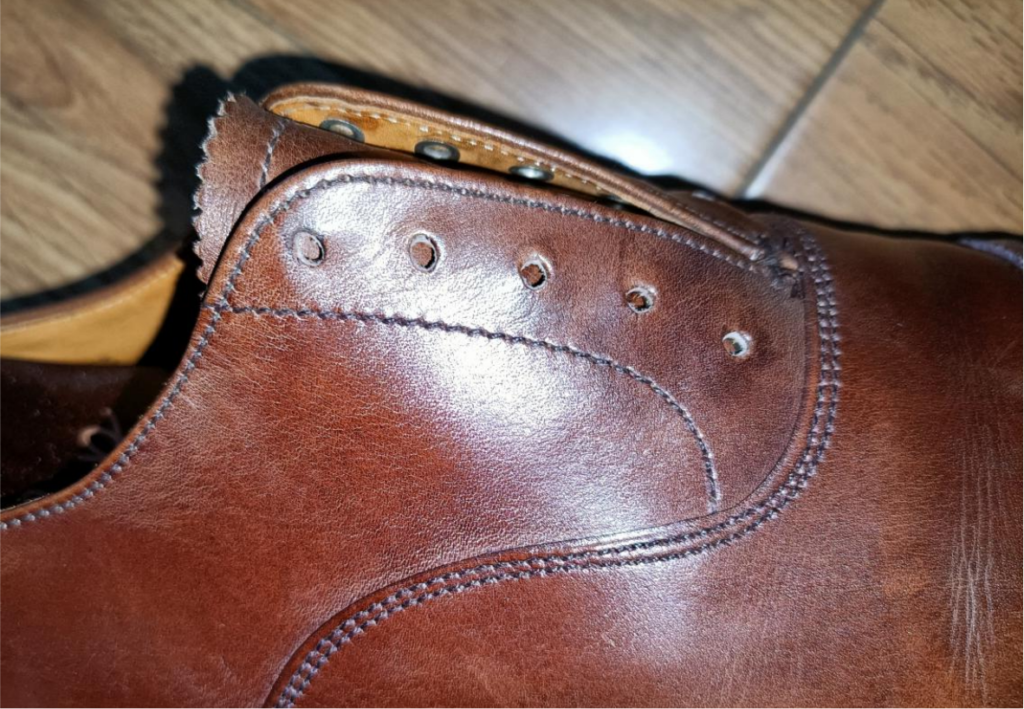
This pair of Poulsen Skone & Co uses this small detail to make its cap toe Oxford a classic. It’s strange, isn’t it? It’s such an unnoticed thing?
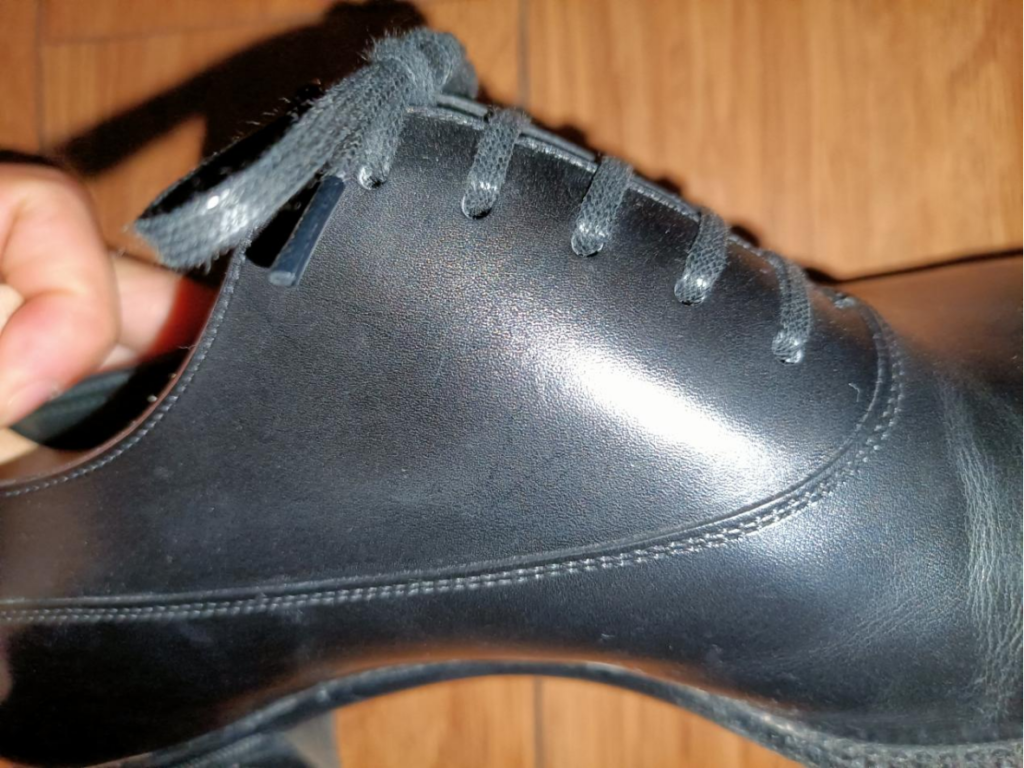
There is no such line on the Balmoral Oxford from Yohei Fukuda.
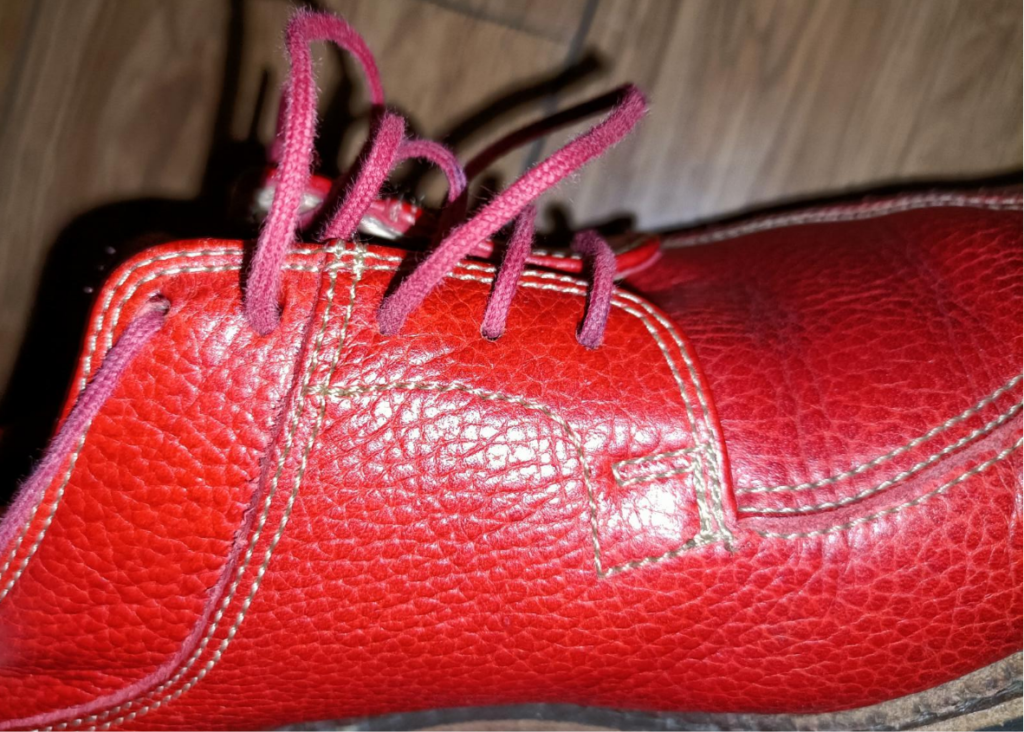
Paraboot Avignon chooses the idea of parallel to the outer edge of leather, but because of the brand’s iconic element of parallel to the toe, this piece is not so important.
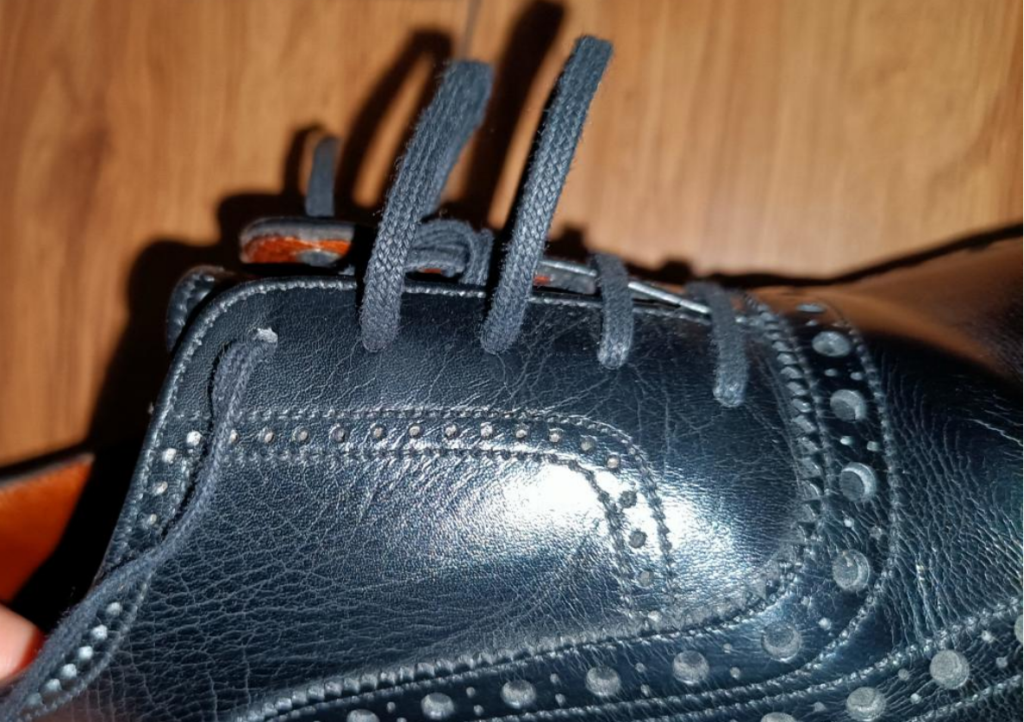
If it is the default practice that the decorative stitching is parallel to the outer edge of leather in Derby, then in Oxford, it is simply shittest dog shit.
This pair of Saxone of Scotland, with this parallelism, shattered all the harmony and beauty of Oxford.
The same design was also seen in Carlos Santos 8213.

I really don’t understand this design.
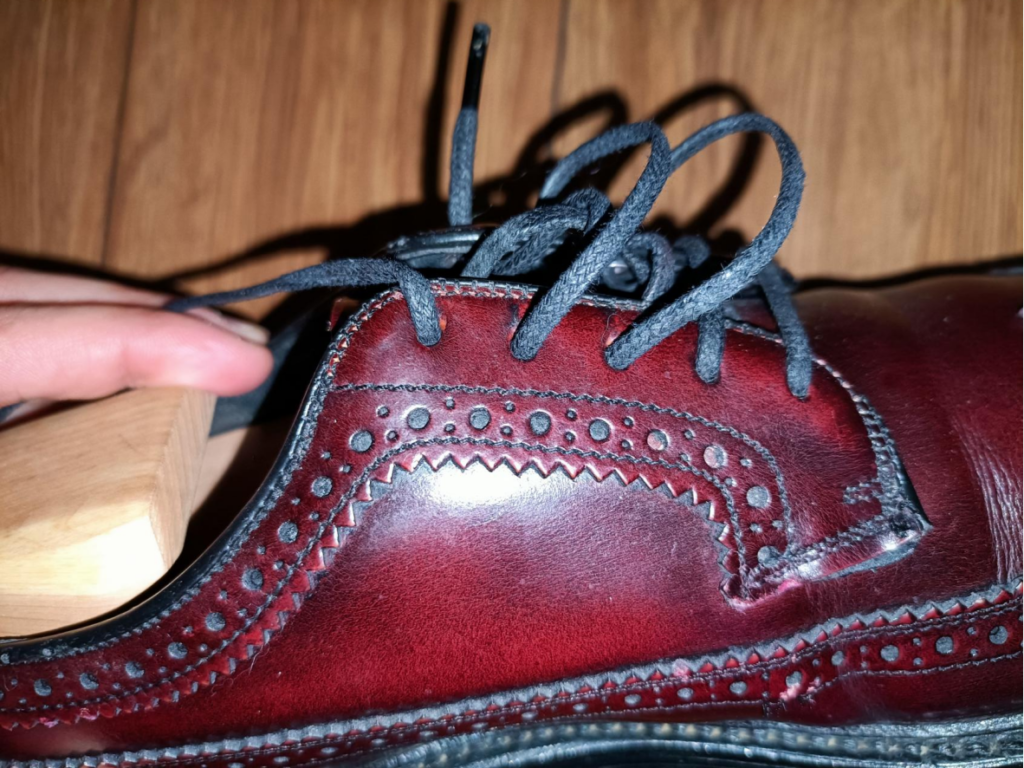
The Longwing of Hanover in the United States, as a derby, is naturally parallel, and then extended to the heel.
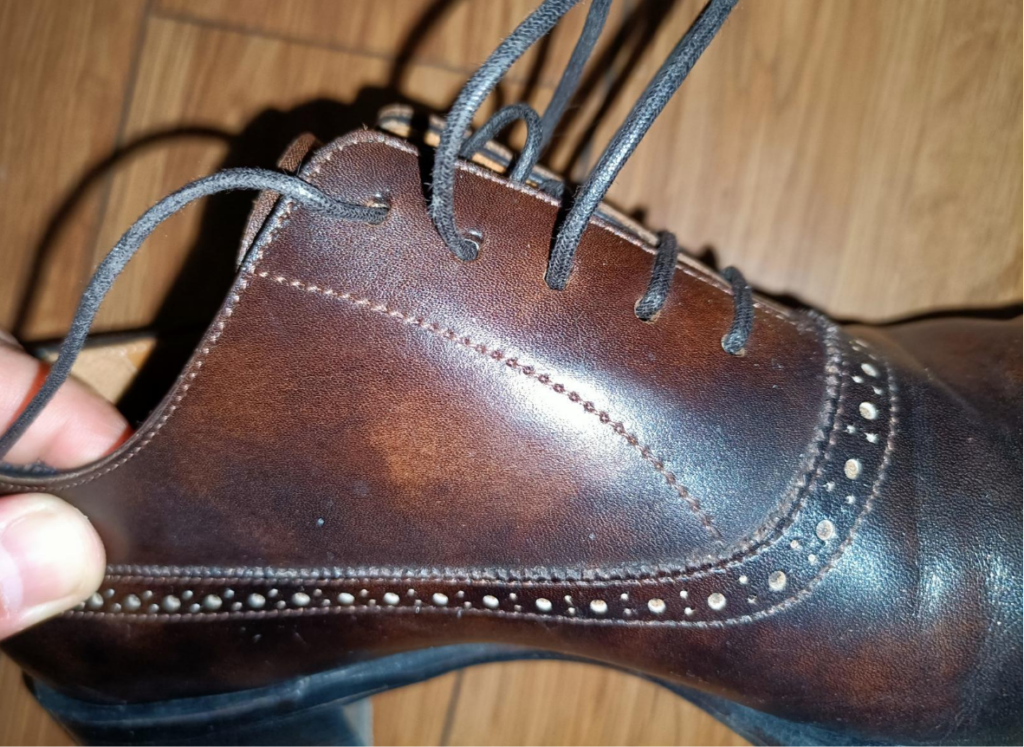
Balmoral of Twinkima.G Beijing, if you compare it with Badia, the stitch fineness loses, but the angle is the same.
We like to talk about stitch density. What is the purpose? Connecting leather? Then why does this pure decorative thread care about density? Because of the beauty, although this difference is really subtle.
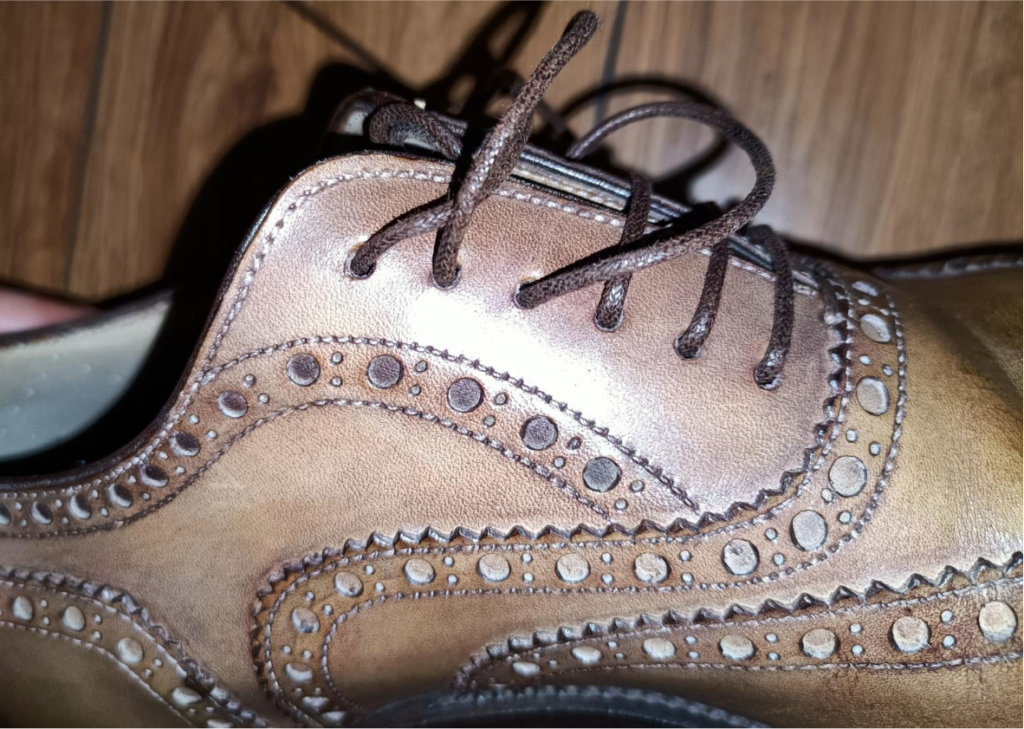
Santoni’s interpretation on Full Brogue can only be said to be a little better than K Shoes, which is also harmonious, but it is still not good enough.
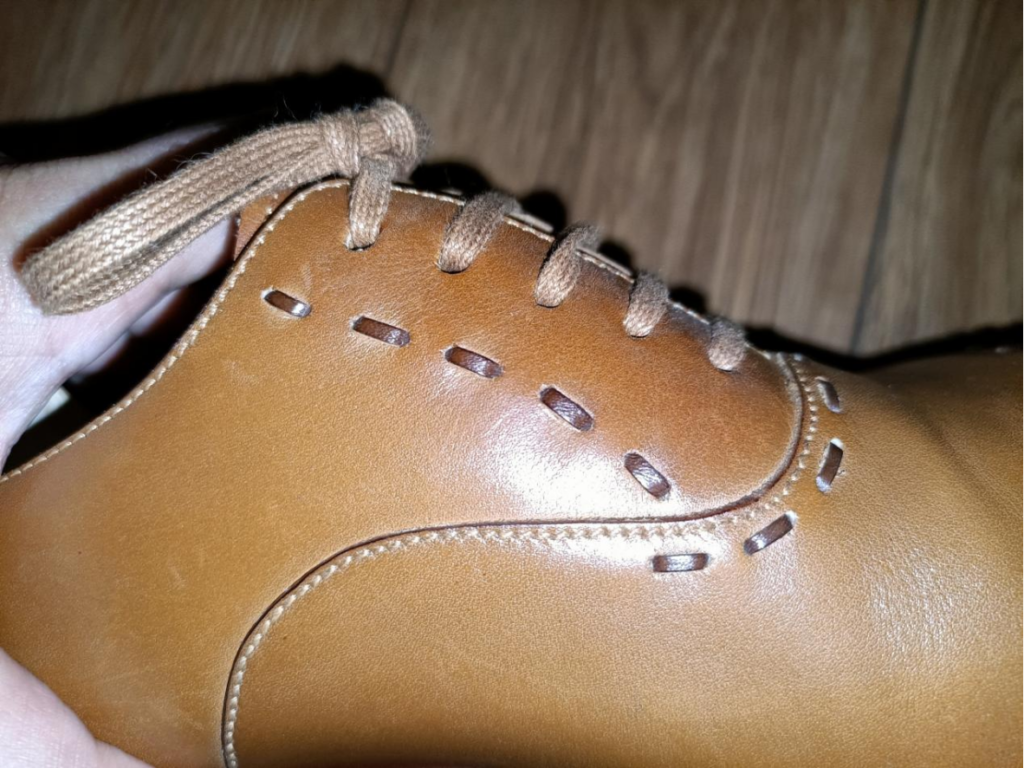
Maftei uses woven leather to form this decoration, because this method has attracted most of the attention, so the angle and density are not noticed.
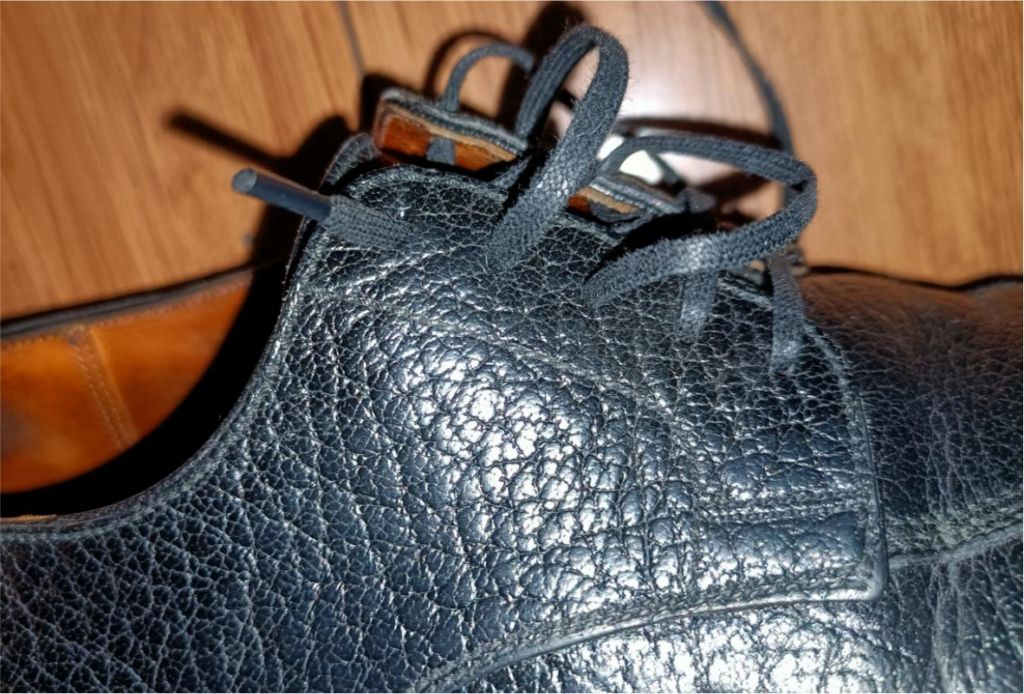
J.M.Weston’s is more funny, because the leather is rough, so stitches can’t be seen at all.
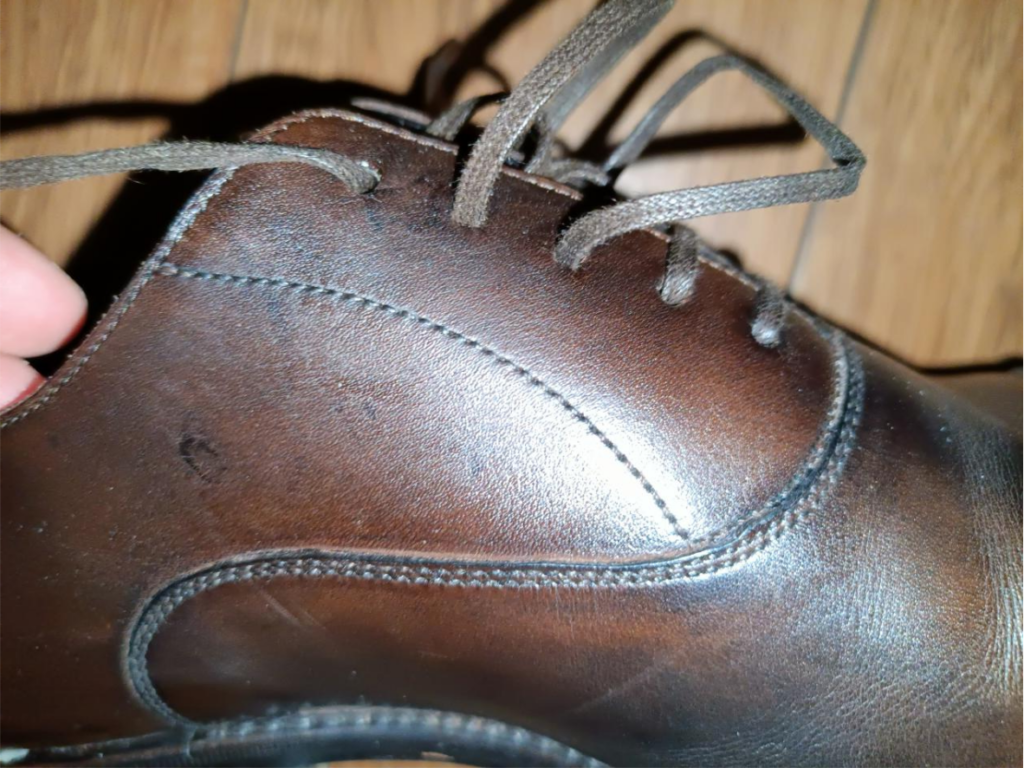
Paolo Scafora’s lines, density and angles are all quite satisfactory.
Looking at it so much, it seems that Badia’s line is the best.
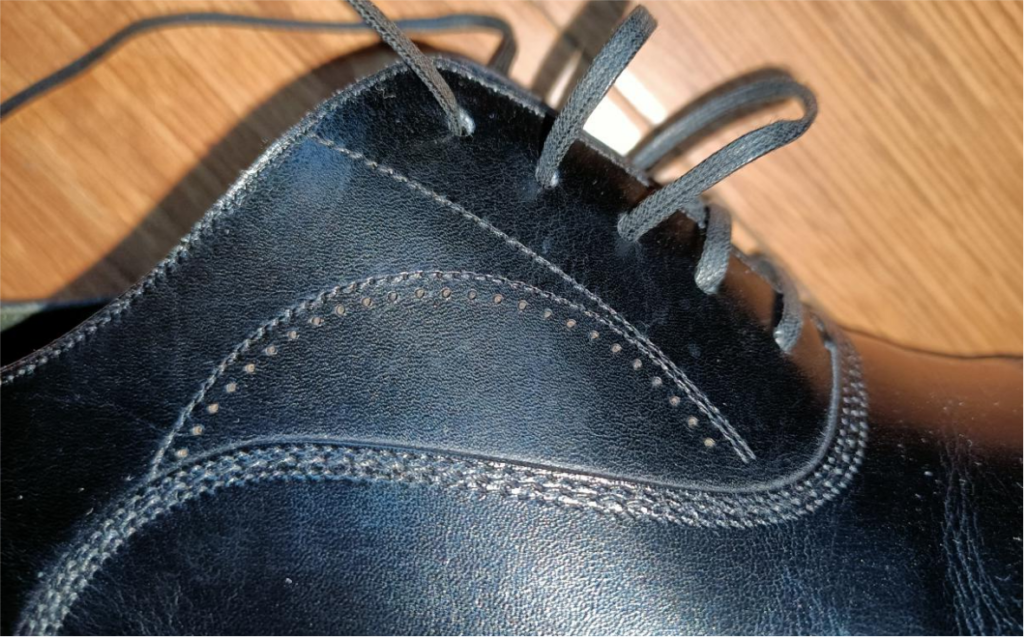
Keitaro Takano x Thom Wills, as the peacock’s eye, a straight line and a curve, have such an aesthetic impact, which is amazing!
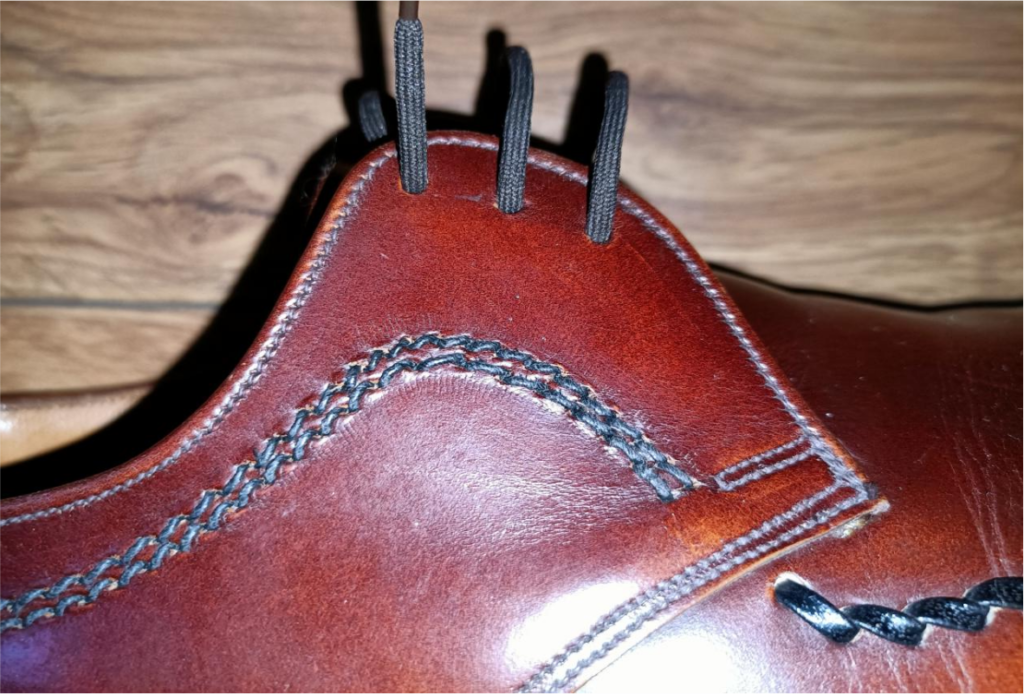
Masegrove, England, is slightly not parallel to the outer edge, just like Maftei Anthony. Because of the eyecatching-ness of the implementation itself, the line’s angle is ignored.
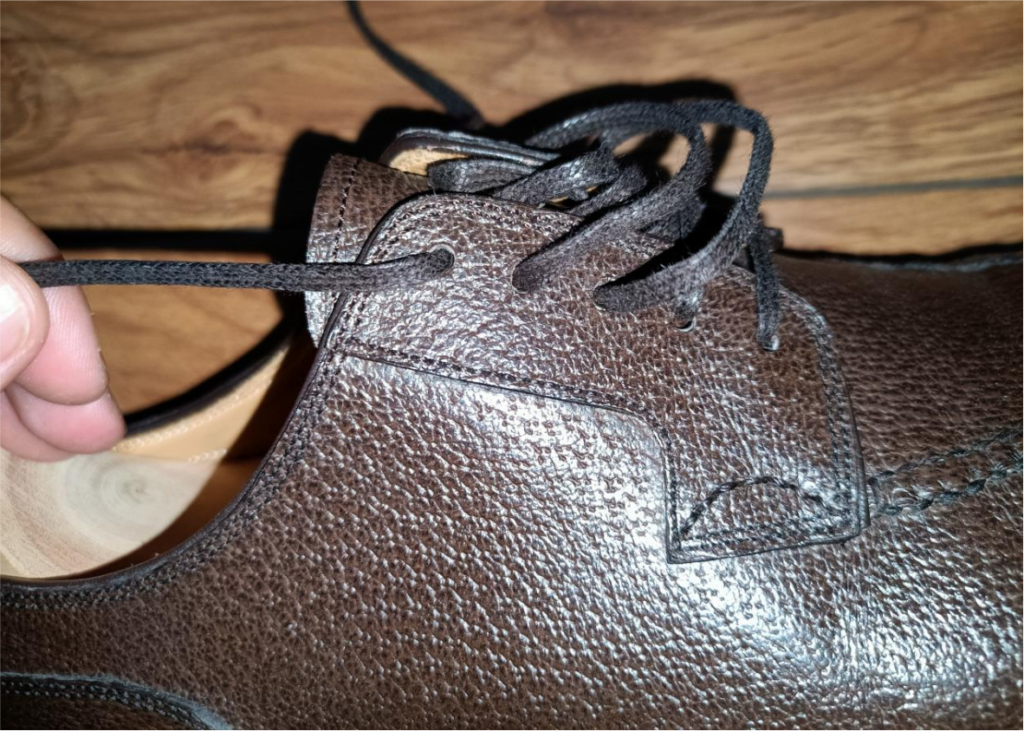
Mattina Respighi is a pair of Blucher, because it is the little decoration of the ear. Mattina has her own brand logo in the area next to the shoelace hole. What is it? The step. If you don’t understand what I’m talking about, look at the following pair.

Elgar presents quite satisfactory in the angle of lines, and its implementation is extremely unique.
In Badia and Mattina, I think it is the embodiment of strength. When foreigners talk about Chinese dress shoes brands, they praise all on our handwelted construction or even hand-sewn soles, but they don’t pay attention to the exquisite design.

A defunct Chinese brand, HaSus. Because the shoelace area is very short, so this turning point seems a bit too cramped. But the execution of the process is no problem.
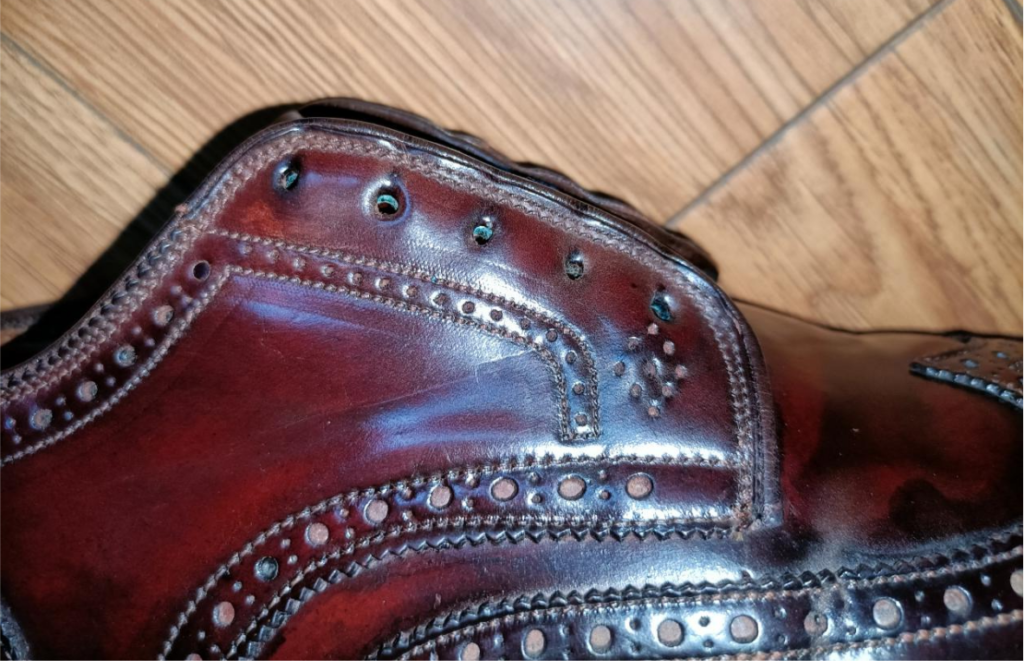
Alden Short Wing, in addition to this narrow Brogue area parallel to the outer edge, also has a diamond decoration. Who the hell is scolding Alden? Come out, I’ll shoot him.
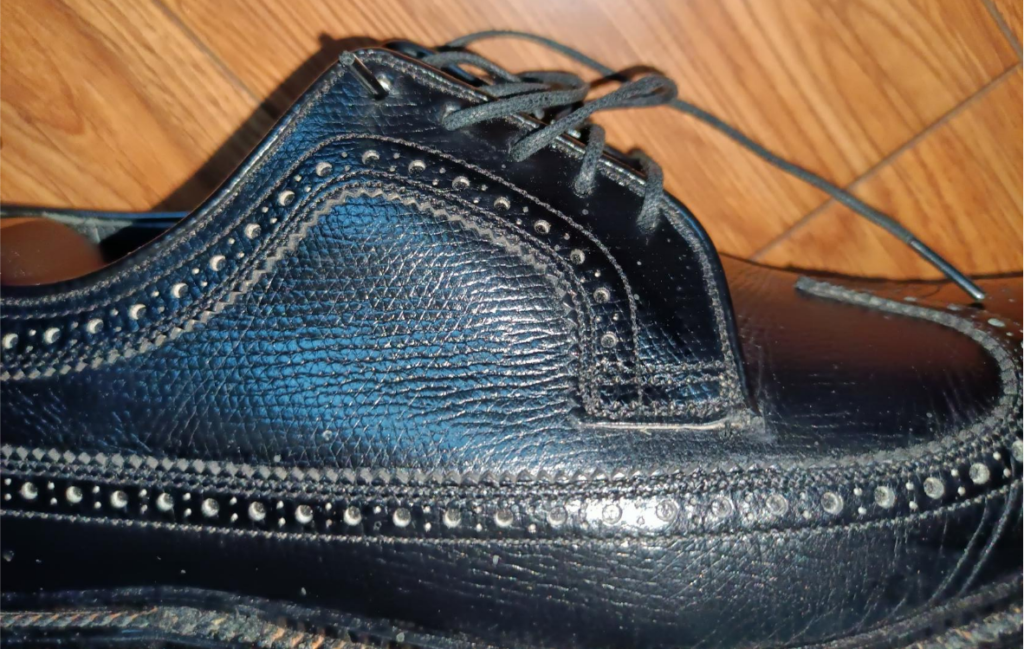
The Longwing of Mason, USA, although the standard is the same as that of the Hanover pair above, its area is narrower.


